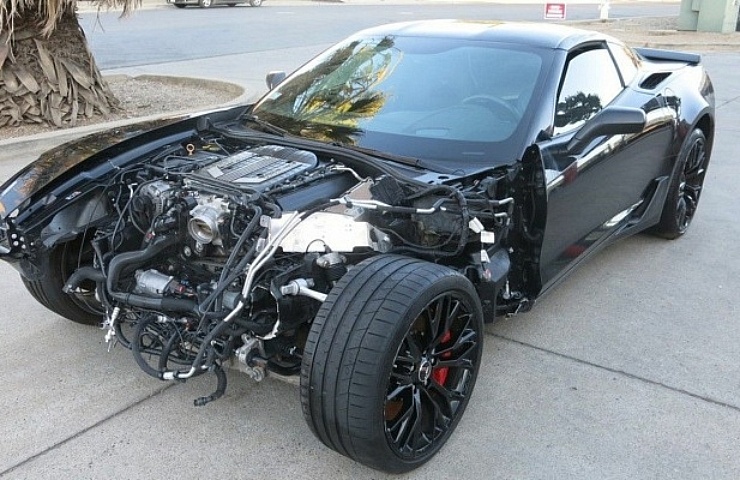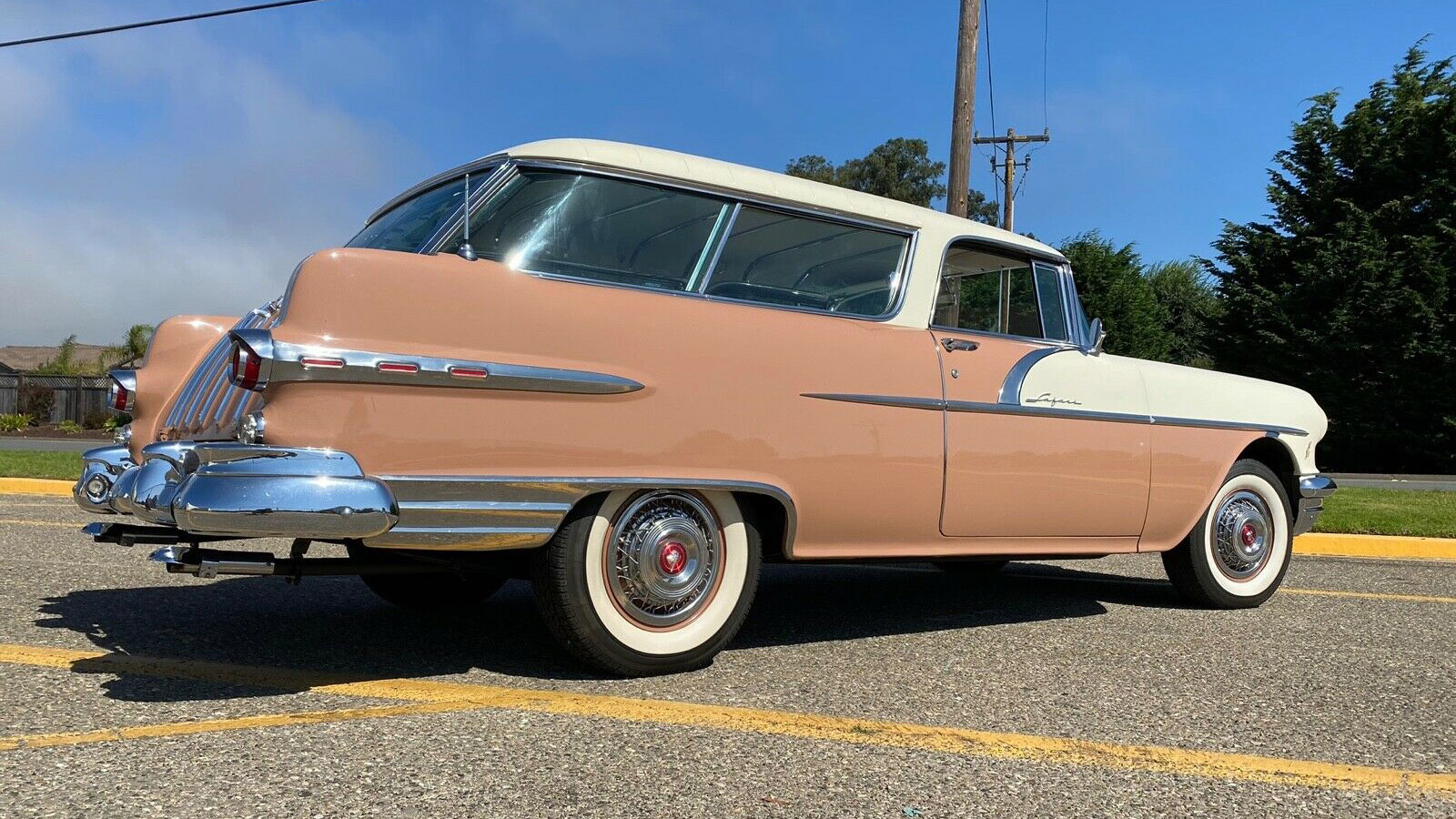Contents
Buying a salvage car can be a good way to get a classic or luxury car that you might not otherwise be able to afford. The price of a salvage car can be attractive. Yet, it’s important to know what it means to buy a car with a “salvage” or “rebuilt” title.
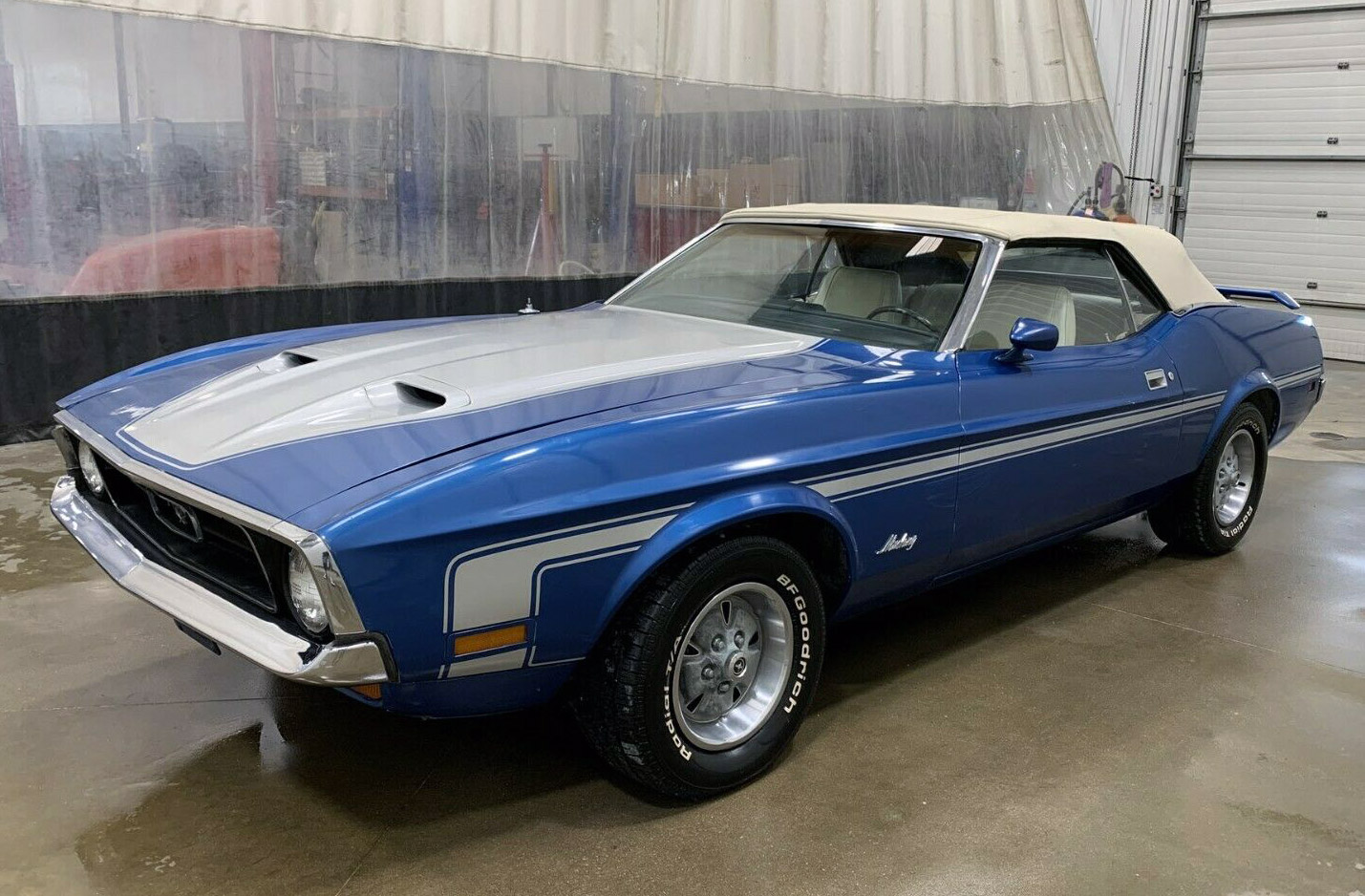
It looks nice, but this ’71 Mustang convertible with just 24,511 miles is a theft recovery with right front damage—and a salvage title.
What Is a Salvage Title?
Every state DMV treats salvage titles a little differently. But all savage titles mean the same thing: The car in question suffered severe damage at some time.
There are many sad stories:
- The car could have been in a moderate-to-heavy fender bender or a major crash
- Or it could be a theft recovery, vandal prey, or a hail/flood victim
The bottom line: The damage was significant enough for an insurance company to declare a total loss.
eBay offers several hundred vehicles with salvage titles. The listings often include stylish classics and primo American muscle cars.
Or more recent European luxury vehicles, like this 40,000-mile 2017 Mercedes 400E 4MATIC. It’s available for a Buy-It-Now price of just $22,900, which helps explain the appeal of salvage-title cars.
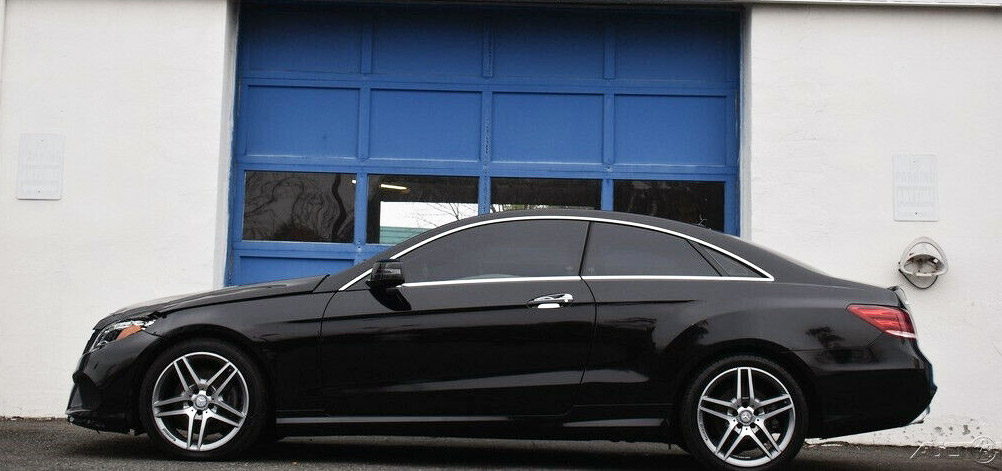
A 2017 Mercedes-Benz 400E 4Matic is offered for maybe half its book value—but with a salvage title.
What Is a Rebuilt Title?
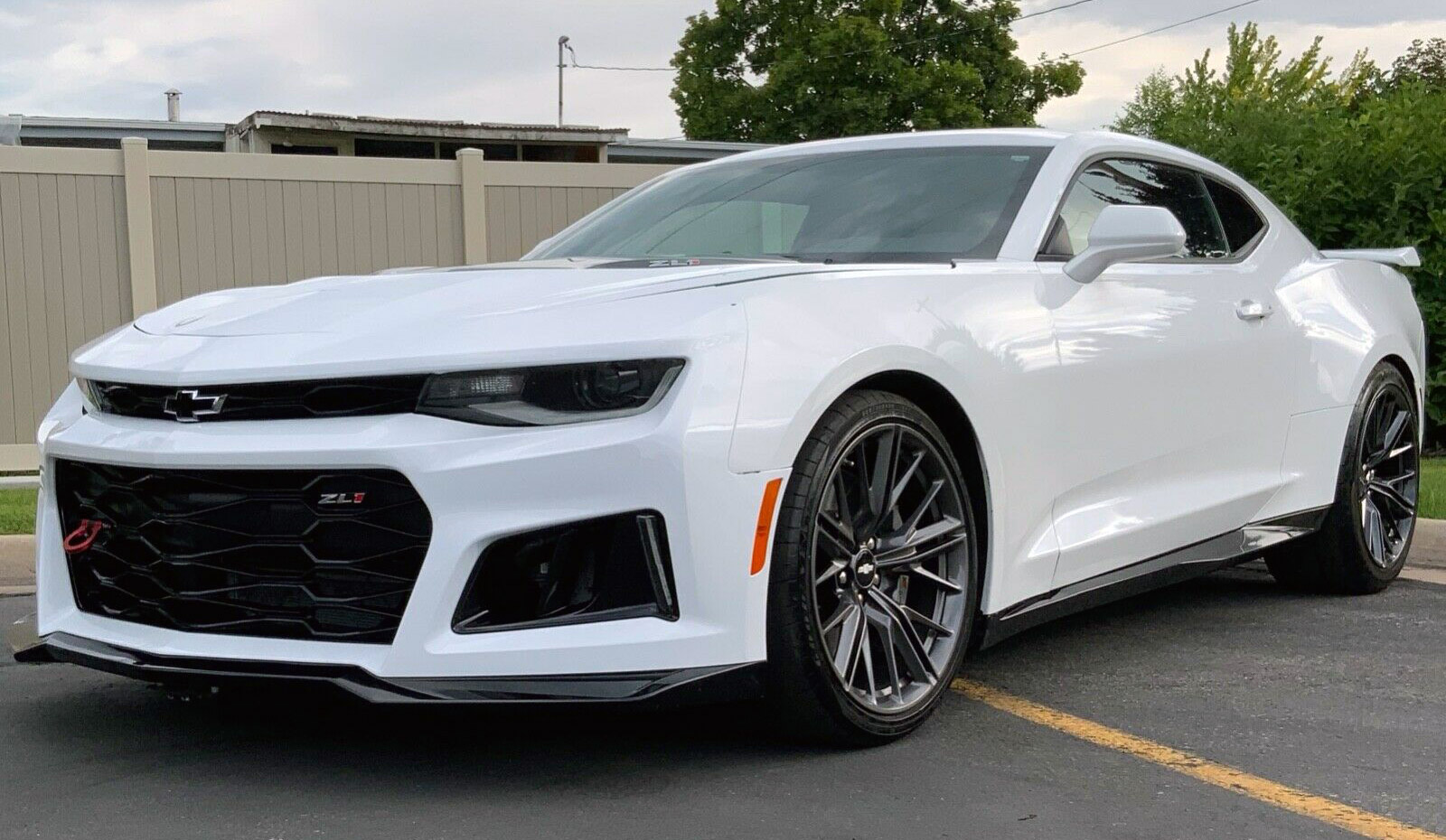
The seller claims that this is “the lowest priced 6th Generation Camaro ZL1 on the market” and that it has “flawless function.” But, it comes with a rebuilt title.
When this process finishes, the car will—from that point going forward—be designated as “rebuilt.” The taint remains with the vehicle. People have a right to know the history when buying a salvage car.
A car with a “rebuilt” title has been inspected and passed by the state DMV. But that’s no guarantee it’s in perfect condition. In some locations, titles are also noted as former taxis and police cars (with lots of use)—or Lemon Law buybacks that were remanufactured.
Salvage vs Rebuilt Title
After a car is declared a total loss, the state DMV issues a salvage or junk certificate. That prevents the car from being re-registered without a safety inspection.
To make the car legal to drive again, the title status needs to change to “rebuilt.” The owners must complete a lot of paperwork to make that happen.
In California, for example, that requires:
- A new, completed title application
- A “statement of facts” about the car’s condition
- A DMV or Highway Patrol-approved certificate-of-inspection form
These documents get submitted along with either a bill of sale (or a licensed dismantler transfer and reassignment form) to earn a Revived Salvage Vehicle registration.
Every state has a different process. In Connecticut, only one location currently inspects salvage vehicles. Owners pay $88 in advance for the privilege. The necessary paperwork must include:
- A copy of the original insurance appraisal leading to the salvage designation
- A completed Salvaged Vehicle Repair Report
- Multiple photos of the car
- An airbag certification statement—if it had them
It’s illegal to drive the car to the inspection. It has to be brought in on a flatbed trailer or car carrier.
In New York, cars get salvage titles if they received damage of more than 75 percent of the retail value. Owners who try to sell a salvage car without disclosing the history face fines up to $2,000. If a New York owner goes through the work to make the car roadworthy, the title status changes to “Rebuilt Salvage.”
Dealers selling such cars have to confirm on the bill of sale that they told the buyer the vehicle had been damaged. In Nevada, it’s a felony to improperly sell a salvage vehicle.
Are Salvage Cars Bad?
You should not automatically avoid buying a salvage car at all costs. But the designation and related processes add hassles. That’s why the price of cars with salvage or rebuilt titles is so low.
For example, you may not be able to get a loan to buy a rebuilt-titled car. Insurance might be harder to get. And many dealers will not accept rebuilt title trade-ins.
The experts don’t necessarily discourage buying salvage or rebuilt cars. Edmunds.com says:
It depends on how comfortable you are with buying a car that has a checkered past. Salvage-title vehicles can be an opportunity if you’re on a budget or in need of a second vehicle.
Edmunds estimates that the price is likely to be 20 to 40 percent less than the same model with a clear title.
Edmunds recommends getting the car inspected by a mechanic and maybe a body shop, too. It also suggests buying from a reputable repairer. You should ask to see the original repair estimate.
It’s highly recommended to get a VIN history report from a company like CarFax or AutoCheck. That report will have information about when the salvage/junk title was issued and what damage was reported. It might indicate “Total Loss Vehicle” or provide some of these details:
- Airbag deployed
- Structural damage reported
- When and where the car was repaired
- If the vehicle was in a flood and not repaired properly
How to Buy a Salvaged Car
Besides studying the title and other paperwork, you will want to examine the vehicle with extra close attention. Follow these steps:
- Search for signs of rusting bolts or bubbles forming under the paint.
- A rough texture to the paint is called “orange peel.” It’s a sign of poor prep before a quickie repaint.
- Look to see that the paint is consistent from one panel to another.
- Examine gaps between panels. Magnets are useful for detecting filler used to cover body damage.
You will want to go for a test drive. You’re looking for smooth acceleration without hesitation. Hold the wheel lightly to check for a tendency to wander to one side, and make sure the car brakes evenly. Check all the electrics because flooding messes up connections.
Shop salvage cars nowSalvage Titles on Valuable Classics vs Damaged Beaters
Newer cars with salvage titles may not be worth fixing. Classics that gained in value since getting the salvage title might be worth thinking about. Yet, not all experts agree.
Expert Takes
According to Philip Richter, proprietor of the Turtle Garage and a contributor to Sports Car Market, said:
I personally would never buy a collector car with a salvage title because pedigree and records are crucial in resale value. A car with a salvage title means negative things have happened to it, and once that’s on its record, you cannot remove it. I would stay away. Of course, if you are getting a great deal and are just going to use the car up and drive it, then it’s different.
Andy Reid, east coast editor of ClassicCars.com, agrees:
As a rule, I stay away from them and advise others to do the same. I also work in collector car insurance, and salvage or rebuilt titles can be difficult to insure for an agreed value.
But Reid makes exceptions for, especially valuable collector cars. He said:
I have seen a salvage-title Ferrari 330GTS sell for more than a million dollars, and that was a car that needed a complete restoration. It would not fetch that kind of money today. The exception would be, say, if you had something like a 1967 Porsche 911R or a rare 250/275/330 series Ferrari, something of that nature. You could restore a car like that and erase any salvage-title perception issues by fully documenting the restoration.
Josh Mortensen, co-founder and managing editor of Barnfinds.com, is also cautious. He counsels a case-by-case approach:
We stay away from salvage titles unless it’s something that we have to have. It also depends on why the car has a salvage title. During the ’80s and ’90s, there were lots of classics that were branded after suffering pretty minor damage because they weren’t valuable enough to justify fixing. If that’s the case, there’s usually not any additional risk over buying any other vehicle.
The Bottom Line on Buying a Salvage Car
Experts say that a salvage title compromises future resale value. But, some buyers look for a low-priced car and don’t care about future resale value. If that sounds like you, then buying a salvage car at a lower price might be too hard to resist.
Shop salvage cars now
